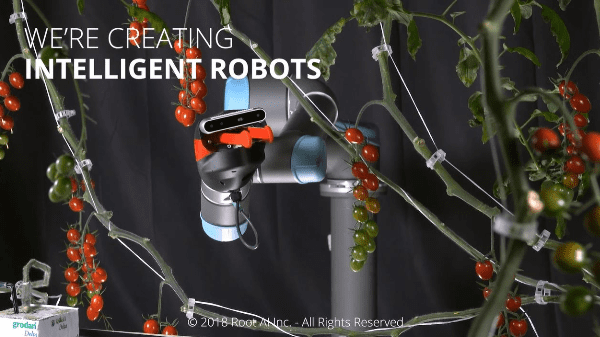The U.S. produce industry seems to be trapped in a race against time. Will it solve its labor difficulties—exacerbated but not created by the coronavirus—in time?
“Labor has and continues to be the biggest challenge in our industry,” observes Tony DiMare, vice president, DiMare Homestead and Ruskin, Inc. BB #:110588, a grower, shipper, and distributor based in Homestead, FL. “The labor supply is not adequate, and at peak production times the shortfalls can be as high as 40-50 percent.”
Michael Schadler, executive vice president of the Florida Tomato Exchange BB #:162441, agrees. “Labor constraints are only going to become more difficult in the future, so we need to start preparing for that reality,” he says.
Many in the industry are looking toward mechanization and robotics as a way out. One company that hopes to come to the rescue is Root AI, a robotics firm based in Woburn, MA.

It has created a robot called Virgo 1, which “uses soft grippers, 3D sensors, and artificial intelligence to harvest different crops,” according to the Robot Report website.
Root AI is starting with fresh tomatoes.
“With motion sensing and AI trained on millions of images, the three-fingered robot can avoid leaves, vines, and unripe fruit, as well as detect and pick items without damaging them, said the company. Virgo’s three compliant fingers, robotic arm, and wrist-twisting motion is designed to mimic human biomechanics.”
In addition, Virgo 1 can be mounted on a track for indoor farming.
In August, Root AI announced that it had received $7.2 million in seed money for further development.
The processing tomato industry is famous for its parallel development of a viable tomato harvester and varieties of tomatoes that could stand up to the machines.
If the Root AI device (or a similar product) makes its way to commercial development, mechanization in the fresh tomato industry is likely to evolve in the same way: machinery and varieties suited to those machines will be developed in parallel.
“We continue to test new tomato varieties that could one day be mechanically harvested,” says Schadler. “We hope to begin testing actual harvest machines in the coming years, but more development is needed.”
The future for robotic harvesting is not yet here, but it is coming closer.



